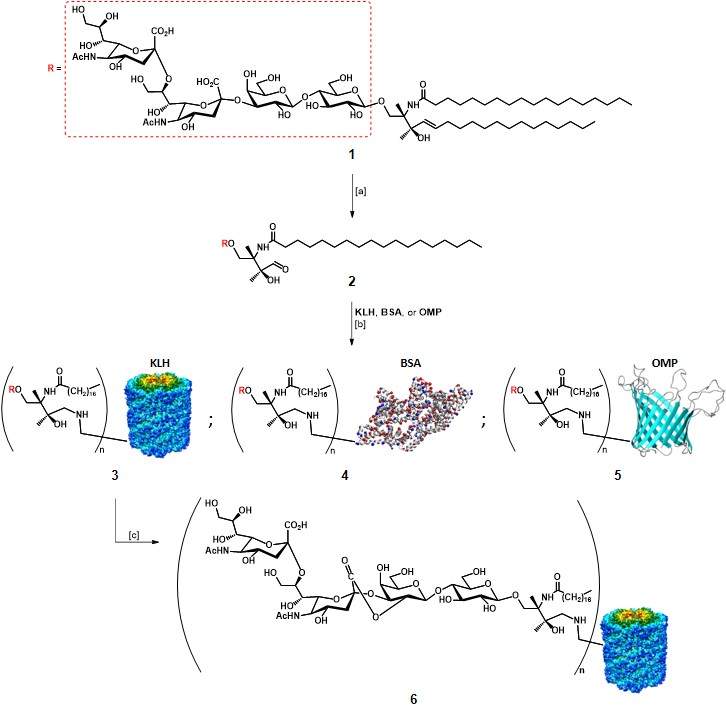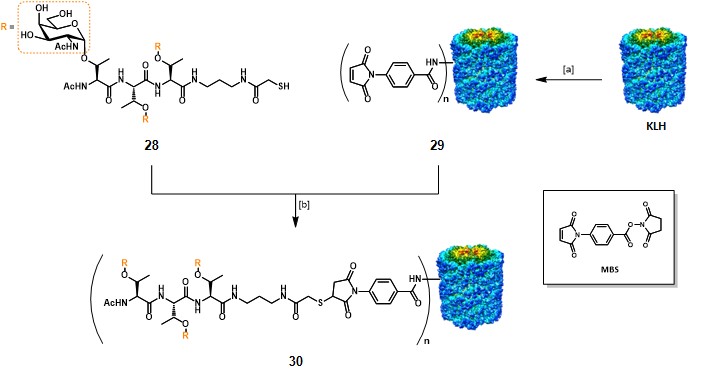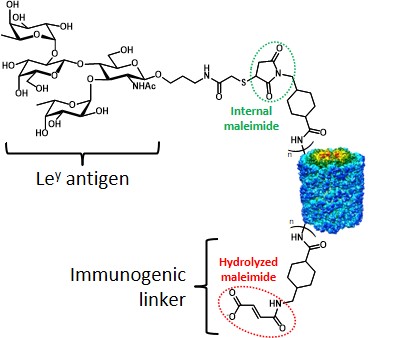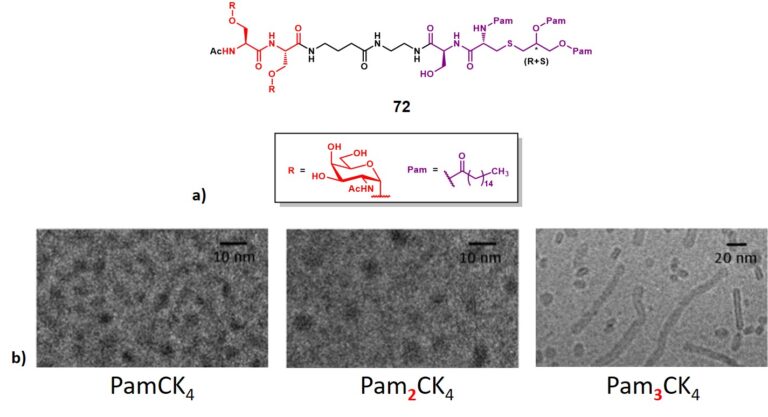Introduction
The aim of this chapter was to give some representative, key examples in the domain of anticancer vaccines from the
The aim of this chapter was to give some representative, key examples in the domain of anticancer vaccines from the

Mono-TACA vaccines based on protein-carriers As mentioned earlier, the first approaches for TACA-based vaccines relied on the utilization of extracted

In the frame of clustered monomeric vaccines, Danishefsky’s research group reported the synthesis and immunological evaluations of a clustered Tn-based
Mono-TACA vaccines have shown promising results in early clinical trials, nevertheless this approach does not take account of the inherent

Despite these important results obtained in the field of chemical immunology, the carrier-protein approach suffers from some limitations. The TACA-protein

Virus-like particles Virus-like particles (VLPs) are non-infectious multiprotein structures which mimic envelopes or capsids of authentic native viruses, but lacking

Leclerc and co-workers paved the way for the fully-synthetic approach in TACA-based anticancer vaccines. In 1997, they prepared a glyco-dendrimer,

Along with the abovementioned two-component synthetic constructs bearing B- and TH-cell epitopes, other research groups reported a similar design strategy

In 2007, Boons and co-workers described syntheses and immunological properties of three-component vaccine construct 78 and 79 (Figure 15a). These multicomponent constructs incorporate a
To complete this overview on vaccine design, it is noteworthy at least mentioning the wide role of adjuvants : immune-enhancing additives
Semi-synthetic approaches In this section, a panel of strategies to overcome the problems associated to the semisynthetic protein-carrier approach has
Carlo Pifferi Carlo Pifferi obtained his Master’s degree in Pharmaceutical Chemistry and Technology, under the supervision of Prof. C. Nativi,